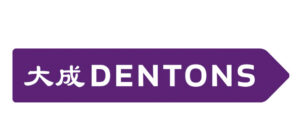Transfer pricing for related-party transactions in the import and export of goods usually needs to follow the arm’s length principle of the Organisation for Economic Co-operation and Development (OECD) Transfer Pricing Guidelines to determine the actual transaction price between related parties, or to test the fairness of related-party transaction pricing. The key is to ensure that the goods transaction activities between related parties can enable each party to obtain a return consistent with its function and positioning in the entire value chain.

Senior Partner
Dentons
Meanwhile, customs’ valuations on the price of imported and exported goods, or the judgment on whether the price is fair, should follow the WTO Customs Valuation Agreement, and the domestic customs valuation laws and regulations formulated by each country’s legislature, in order to implement the WTO agreement. In practice, it is often difficult to prove the fairness of related-party transaction prices from the perspective of customs valuation.
Besides, there may also be different understandings between companies and customs towards the valuation, because of the different purposes and regulations between the OECD guidelines and the WTO agreement, the limitation of information exchange, and other factors. In this case, the reference to valuation cases and customs’ interpretation and application of valuation regulations formed in practice are often more instructive than the general provisions of valuation regulations themselves.
Case 1: A company was audited by customs for the fairness of the pricing of imported goods
By obtaining the transfer pricing documentation submitted by a company to the tax bureau, customs found that the company’s annual net profit margin was higher than the upper quartile value of the net profit margin of a comparable company determined through the transactional net margin method (TNMM). Based on this, customs decided that the price of the company’s imported goods did not conform to the principle of fair trade, and should be revalued and adjusted.
A combination of circumstances may result in the annual net profit margin being higher than the upper quartile value of the transfer pricing of a comparable company’s profit margin. Comprehensive analysis and judgment are needed to finally determine whether it is caused by the related-party transaction affecting the transaction price.
By assisting the company with an in-depth analysis of the business operation model and transfer pricing method of that year, the author sorted out the reasons why the annual net profit margin of the company was higher than the profit margin of the comparable company: (1) high-profit products purchased and sold domestically; (2) some imported goods are non-related-party transactions with third parties, and the transaction pricing is based on the commercial negotiation between the two parties under the current business environment; and (3) other related-party import transactions conform to the transfer pricing policy between related parties, the pricing policy conforms to the basic principles of customs valuation, and the profit margin of the related-party import transactions is within the profit range of comparable companies.
The author assisted the company to prepare a large amount of evidence material for detailed explanation and communication with customs. In the end, customs accepted the company’s imported goods price without price adjustment.
Case 2: A company was inquired by customs for its related-party relationship, which affected the transaction price of imported goods
According to the audit report submitted by the company, customs’ analysis was that the company’s annual gross profit margin was higher than the usual profit level in the industry. Based on that, customs decided that the price of the company’s imported goods did not conform to the principle of fair trade, and should be revalued and adjusted.
A company’s gross profit margin is usually the primary reference for customs to decide whether the price of imported goods is fair. The author focused on the analysis of the differences between the company and other companies in the industry, in terms of business operation model, product category, business scale and competitive environment, as well as special factors considered in transfer pricing methods. A detailed technical explanation to customs was made, and the overseas parent company was assisted to provide required explanation material involving transfer pricing.
Customs eventually accepted the company’s annual gross profit margin. Since then, the company and its overseas parent company have had greater awareness and knowledge from the perspective of customs valuations, and adjusted their transfer pricing policy in China, based on the commercial sales environment. The author also assisted the company to file a price adjustment to customs to avoid the price of imported goods being questioned by customs again.
In general, issues related to customs valuation in transfer pricing for related-party transactions are complicated. In practice, there are many cases where customs has made valuation adjustments, and even penalised companies, for false price declarations. There are also various reasons for valuation adjustments.
In some cases, companies neglect to consider the perspective of customs valuation when formulating related-party transaction transfer pricing policies. Some companies have over-considered tax requirements when formulating the policies, and failed to seek a balance between customs and taxation for fairness of related-party transactions. There are also cases of companies being taxed by customs, and even handed over to anti-smuggling bureau for punishment, due to imperfect, irregular transfer pricing policies, or some problems in the implementation process.
As one of the three traditional customs technical fields, customs valuation is closely related to the transfer pricing and other commercial operations of companies. Therefore, the author recommends that companies fully understand its importance, and manage or reduce customs valuation risks through legitimate planning beforehand, or full explanation afterwards. If necessary, companies can seek assistance from a third party.
Frank Wu is a senior partner at Dentons

16th/22nd Floor, 5 Corporate Avenue
No. 150 Hubin Road, Huangpu District
Shanghai 200021, China
Tel: +86 21 5878 5888
Fax: +86 21 5878 6866
E-mail: frank.wu@dentons.cn





















